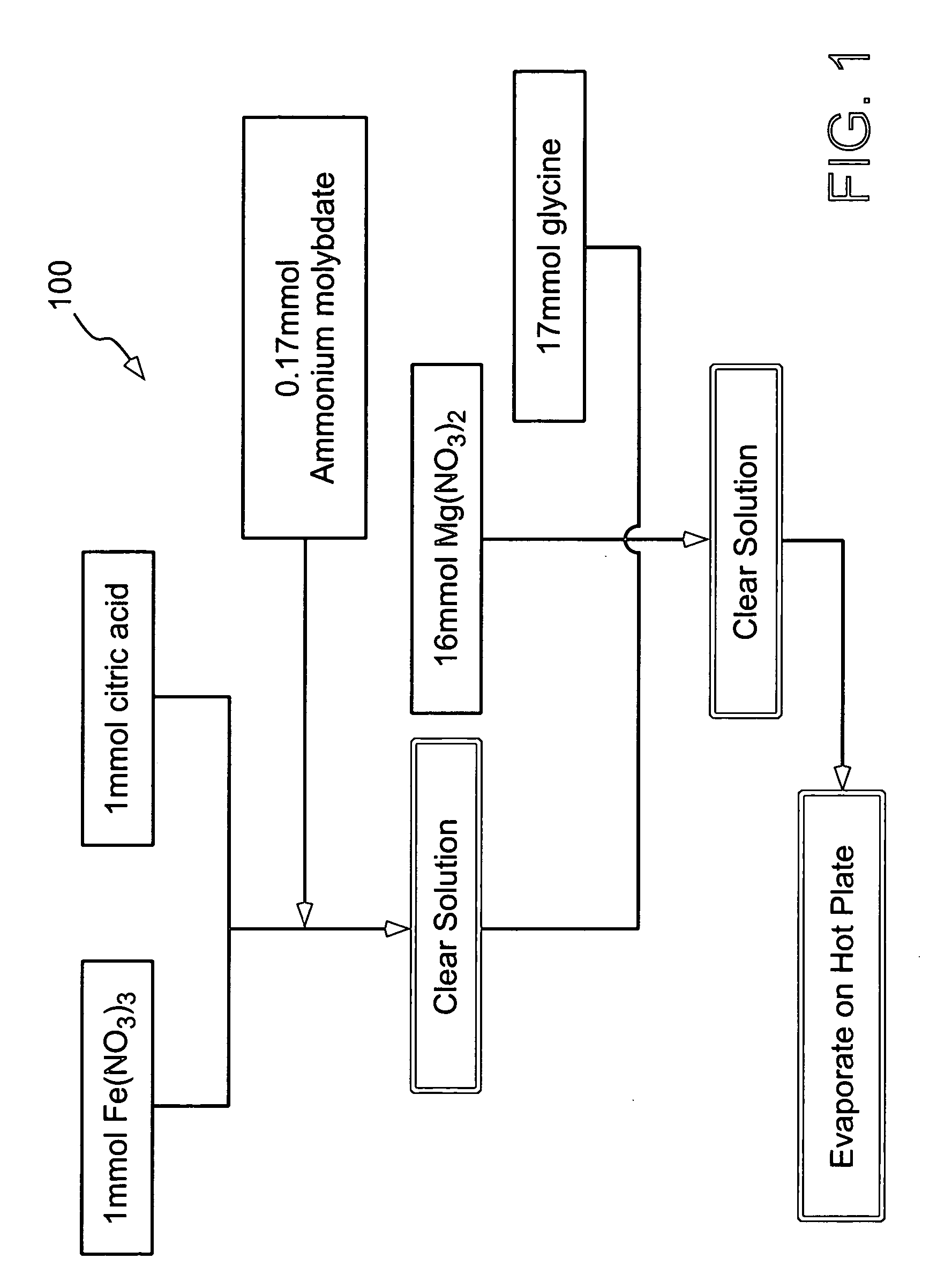Method of synthesizing small-diameter carbon nanotubes with electron field emission properties
a carbon nanotube and electron field technology, applied in the manufacture of electric discharge tubes/lamps, electrode systems, discharge tubes luminescnet screens, etc., can solve the problems of catastrophic failure, high cost, and small quantity of materials produced by laser ablation methods, etc., to facilitate catalyst preparation, high quality, and the effect of high emission current density
- Summary
- Abstract
- Description
- Claims
- Application Information
AI Technical Summary
Benefits of technology
Problems solved by technology
Method used
Image
Examples
Embodiment Construction
[0030] In general, the growth process for nanotubes synthesis involves a series of steps: (1) heating a catalyst material to high temperature, usually between 700° C. to 1000° C. The catalysts usually are nanoparticles composed of transition metals supported on either porous or flat supports. The catalyst can also be metal nanoparticles formed in gas phase and floating in the flow of feeding gas; (2) introduction of precursor gas containing a carbon source into the furnace; (3) diffusion and decomposition of precursor on the surface of catalyst nanoparticles and dissolution of carbon atoms within the metal nanoparticles; and (4) nucleation and growth of nanotubes from the metal nanoparticles saturated with carbon atoms.
[0031]FIG. 1 illustrates an exemplary scheme for preparation of catalysts. The method 100 is based on a combustion process, such as that generally used to produce complex oxides. This process 100 involves the exothermic reaction of an oxidizer (e.g., metal nitrates) ...
PUM
 Login to View More
Login to View More Abstract
Description
Claims
Application Information
 Login to View More
Login to View More - R&D
- Intellectual Property
- Life Sciences
- Materials
- Tech Scout
- Unparalleled Data Quality
- Higher Quality Content
- 60% Fewer Hallucinations
Browse by: Latest US Patents, China's latest patents, Technical Efficacy Thesaurus, Application Domain, Technology Topic, Popular Technical Reports.
© 2025 PatSnap. All rights reserved.Legal|Privacy policy|Modern Slavery Act Transparency Statement|Sitemap|About US| Contact US: help@patsnap.com



